I have a problem with the default separator on UITableView in iOS 7.
When used as default the first and last separators have no insets, others are a bit inset. The original situation can be seen below:

Everything is ok. The first and last separators spread through the entire width of the table while the others are a bit smaller. Now I have the table view set to editing and I allow the user to reorder cells. And when the user does so the separators get messed up and do not appear correctly. The situation can be seen on the images below:


Do I really need to reload the data in order to fix this issue or is it an iOS 7 bug or am I doing something wrong?
How to fix this?
EDIT
Added some info about my implementation. I return NO on - (BOOL)tableView:(UITableView *)tableView shouldIndentWhileEditingRowAtIndexPath:(NSIndexPath *)indexPath and UITableViewCellEditingStyleNone on - (UITableViewCellEditingStyle)tableView:(UITableView *)tableView editingStyleForRowAtIndexPath:(NSIndexPath *)indexPath. My - (UITableViewCell*)tableView:(UITableView *)tableView cellForRowAtIndexPath:(NSIndexPath *)indexPath is:
- (UITableViewCell*)tableView:(UITableView *)tableView cellForRowAtIndexPath:(NSIndexPath *)indexPath
{
static NSString *cellIdentifier = @"cell";
UITableViewCell *cell = [tableView dequeueReusableCellWithIdentifier:cellIdentifier];
if (!cell)
cell = [[UITableViewCell alloc] initWithStyle:UITableViewCellStyleDefault reuseIdentifier:cellIdentifier];
cell.shouldIndentWhileEditing = NO;
cell.textLabel.font = [UIFont someFont];
UIColor *color = [UIColor randomColor];
cell.textLabel.text = @"Some text";
CGRect rect = CGRectMake(0, 0, 15, 15);
UIGraphicsBeginImageContextWithOptions(rect.size, NO, 0);
CGContextRef ctx = UIGraphicsGetCurrentContext();
[color set];
CGContextFillEllipseInRect(ctx, rect);
cell.imageView.image = UIGraphicsGetImageFromCurrentImageContext();
UIGraphicsEndImageContext();
return cell;
}
and
- (void)tableView:(UITableView *)tableView moveRowAtIndexPath:(NSIndexPath *)sourceIndexPath toIndexPath:(NSIndexPath *)destinationIndexPath
{
if (sourceIndexPath.row == destinationIndexPath.row) return;
NSString *tmp = [itemOrder objectAtIndex:sourceIndexPath.row];
[itemOrder removeObjectAtIndex:sourceIndexPath.row];
[itemOrder insertObject:tmp atIndex:destinationIndexPath.row];
didReorder = YES;
}